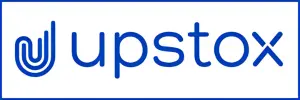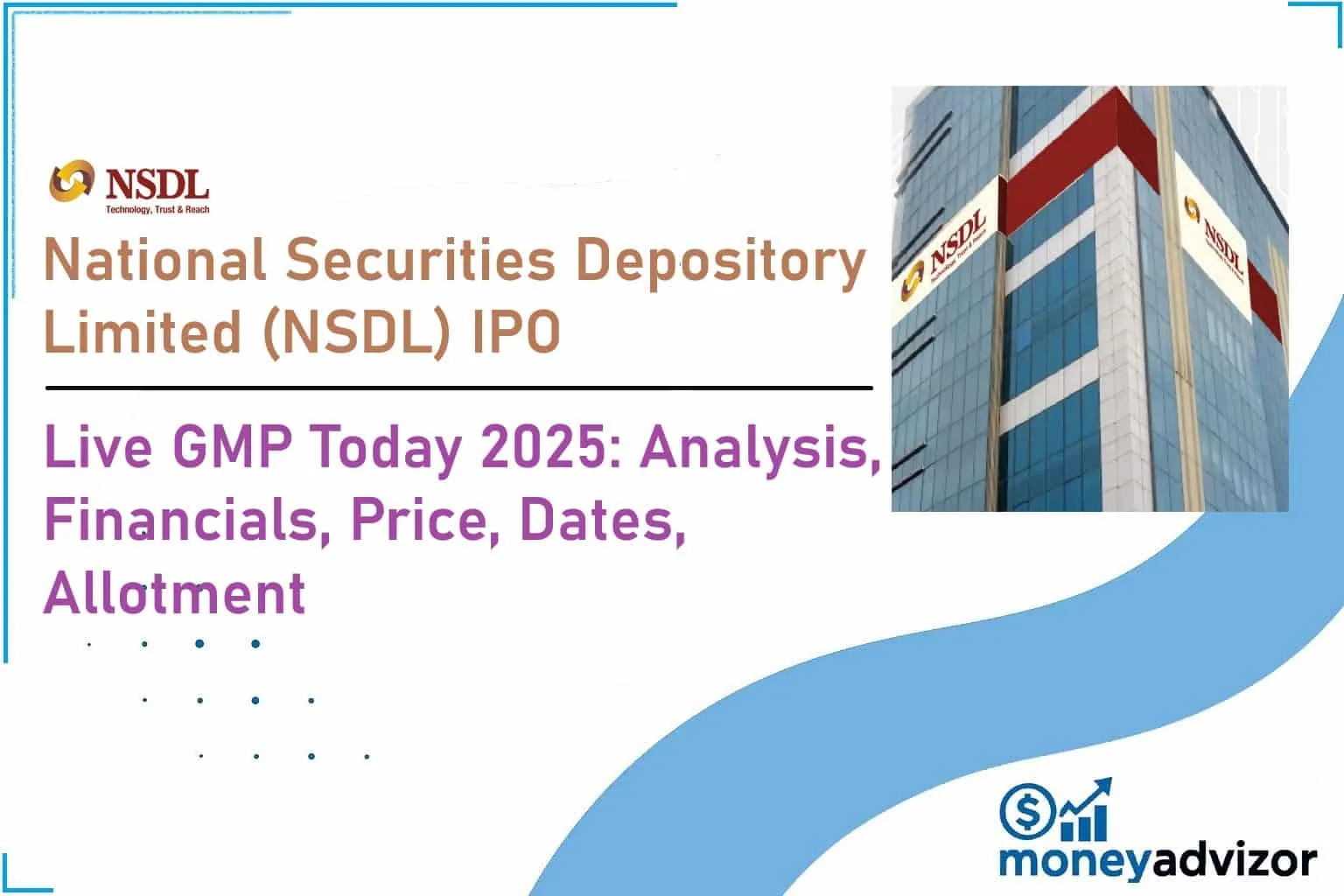The National Securities Depository Limited (NSDL) IPO, a landmark event in India’s financial infrastructure landscape, is set to open for subscription on July 30, 2025. As the cornerstone of India’s dematerialized securities ecosystem, NSDL’s public offering presents a unique opportunity to invest in the backbone of the capital markets. This comprehensive guide provides everything investors need to know about the NSDL IPO 2025, including live GMP updates (as available), financials, timelines, risks, and expert analysis.
About IPO Details
The NSDL IPO is a significant ₹4,011.60 crore Offer for Sale (OFS). Existing shareholders are divesting 5.01 crore equity shares, representing a substantial stake sale. Crucially, no fresh capital is being raised by the company – all proceeds go to the selling shareholders.
- Issue Type: Book Built IPO (OFS)
- Price Band: ₹760 to ₹800 per share
- Face Value: ₹2 per share
- Market Lot: 18 Shares
- Minimum Investment (Retail): ₹14,400 (18 shares * ₹800) – ₹13,680 (18 shares * ₹760)
- Total Issue Size: 5,01,45,001 Shares (Aggregating up to ₹4,011.60 Crores)
- Employee Discount: ₹76 per share (Applicable on the issue price)
- Listing Exchange: BSE
- Pre-Issue Share Capital: 20,00,00,000 Shares
- Post-Issue Share Capital: 20,00,00,000 Shares (No new shares issued)
- Lead Managers (Book Running Lead Managers – BRLMs):
- ICICI Securities Limited
- Axis Capital Limited
- HSBC Securities & Capital Markets (India) Private Limited
- IDBI Capital Markets & Securities Limited
- Motilal Oswal Investment Advisors Limited
- SBI Capital Markets Limited
About the IPO Company: National Securities Depository Limited (NSDL)
Incorporated in 1996 (not 2012 as sometimes misstated; it received SEBI registration in 1996), NSDL is India’s first and largest securities depository, registered with SEBI as a Market Infrastructure Institution (MII). It forms the critical electronic spine for India’s capital markets.
Core Activities:
- Depository Services: Maintaining electronic records of ownership for equities, bonds, debentures, government securities, mutual fund units, ETFs, and other securities.
- Settlement: Facilitating the electronic transfer of securities in market (exchange) and off-market transactions.
- Corporate Actions: Managing dividends, interest, bonuses, splits, mergers, etc., electronically for securities held in demat form.
- Value-Added Services: e-Voting, Consolidated Account Statement (CAS), KYC (Know Your Customer) authentication, NSDL e-Gov (offering PAN, TAN, TDS, etc.), Digital Vault, Tax Information Network (TIN), and more.
Subsidiaries:
- NSDL Database Management Limited (NDML): Provides services in e-Governance, regulatory platforms, KYC, insurance repository, and collaborative industry platforms. Manages projects like SEZ online and the National Skills Registry.
- NSDL Payments Bank Limited (NPBL): Operates a B2B-focused payments bank offering digital banking, domestic remittances, savings accounts, AePS, micro-ATMs, prepaid cards, UPI, POS, and distribution of third-party products (insurance, mutual funds).
Market Position & Strengths (As of August, 2025):
- Dominant Market Share: Leader in the Indian depository space.
- Scale: 39.45 million active demat accounts.
- Wide Reach: 294 registered depository participants (DPs), 33,758 registered issuers.
- National & Global Presence: Account holders in over 99% of Indian PIN codes and 186 countries.
- Systemically Critical: Integral to the safe and efficient functioning of Indian securities markets.
- Recurring Revenue Model: Significant portion of income is stable and recurring (account maintenance fees, transaction fees).
- Technological Edge: Robust, scalable, and secure IT infrastructure with strong risk management and cybersecurity protocols.
- Experienced Management: Led by a seasoned team with deep domain expertise.
IPO GMP (Grey Market Premium) Today
- What is GMP? The Grey Market Premium (GMP) is the unofficial premium at which IPO shares trade in the grey market before the official listing. It reflects grey market sentiment about potential listing gains.
- GMP for NSDL IPO (Live Updates): GMP fluctuates daily based on market sentiment, subscription levels, and overall market conditions. As the IPO date approaches, reliable grey market sources will provide updates. Check reputable financial news websites or dedicated IPO tracking platforms closer to the subscription window (July 30-Aug 1, 2025) for the live NSDL IPO GMP.
- Interpreting GMP: A positive GMP suggests grey market expects listing above the issue price. A negative GMP (discount) suggests potential listing below issue price. Note: GMP is not an official indicator and carries inherent risks. Relying solely on GMP for investment decisions is not recommended.
- Today’S GMP: ₹135
Note: GMP fluctuates daily. Check our IPO GMP Tracker for real-time updates.
IPO Company Financial Data (Restated Consolidated)
NSDL has demonstrated consistent financial growth, driven by the expansion of demat accounts and capital market activity.
Table: NSDL Financial Performance (₹ Crore)
| Period Ended | 31 Mar 2025 | 31 Mar 2024 | 31 Mar 2023 | Growth (FY25 vs FY24) |
|---|---|---|---|---|
| Total Assets | 2,984.84 | 2,257.74 | 2,093.48 | 32.2% |
| Total Revenue | 1,535.19 | 1,365.71 | 1,099.81 | 12.4% |
| Profit After Tax (PAT) | 343.12 | 275.45 | 234.81 | 24.6% |
| EBITDA | 492.94 | 381.13 | 328.60 | 29.3% |
| Net Worth | 2,005.34 | 1,684.10 | 1,428.86 | 19.1% |
| Reserves & Surplus | 232.31 | 216.32 | 199.08 | 7.4% |
| EPS (₹) | 17.16 | 13.77 | 11.74 | 24.6% |
Key Takeaways:
- Strong double-digit growth in Revenue (12.4%) and PAT (24.6%) in FY25.
- Robust EBITDA growth (29.3%), indicating efficient operations.
- Healthy growth in Net Worth (19.1%) and Assets (32.2%).
- Consistent improvement in Earnings Per Share (EPS).
IPO Application Details & Lot Size
Applying for the NSDL IPO is straightforward through ASBA (Application Supported by Blocked Amount) via your bank or trading account (like Zerodha, ICICI Direct, HDFC Securities, etc.).
Table: NSDL IPO Lot Size & Investment
| Application Category | Lots | Shares | Amount Range (₹) * | Remarks |
|---|---|---|---|---|
| Retail (Min) | 1 | 18 | 13,680 – 14,400 | Min. investment |
| Retail (Max) | 13 | 234 | 1,77,840 – 1,87,200 | Max for Retail (≤ ₹2 Lakhs) |
| sNII (Min) | 14 | 252 | 1,91,520 – 2,01,600 | Small HNI (₹2-10 Lakhs) |
| sNII (Max) | 69 | 1,242 | 9,43,920 – 9,93,600 | Max for sNII |
| bNII (Min) | 70 | 1,260 | 9,57,600 – 10,08,000 | Big HNI (>₹10 Lakhs) |
| Employee (Min) | 1 | 18 | 12,312 – 13,032^ | Min with Discount |
| Employee (Max) | 13 | 234 | 1,59,588 – 1,68,948^ | Max with Discount (≤ ₹2L) |
- *Amount Range = Shares * Price Band (₹760 – ₹800).*
- ^ *Employee Amount Range = Shares * (Price Band – ₹76 Discount).* Employees bidding up to ₹2 lakhs are eligible for the discount. Employees can also apply in the Retail or NII categories without the discount.
IPO Reservation Quota
The shares offered in the IPO are reserved for different investor categories as per SEBI regulations:
Table: NSDL IPO Reservation Quota
| Investor Category | Reservation (% of Net Offer) |
|---|---|
| Qualified Institutional Buyers (QIB) | Not more than 50% |
| Non-Institutional Investors (NII) | Not less than 15% |
| Small NII (sNII) | (Within NII) >₹2L – ≤₹10L |
| Big NII (bNII) | (Within NII) >₹10L |
| Retail Individual Investors (RII) | Not less than 35% |
| Eligible Employees | Portion of RII/NII Quota* |
- *The Employee Reservation is not a separate quota but forms part of the RII/NII portion. Employees can apply under their respective category (RII/NII) and avail the discount if bidding within the ₹2 lakh limit.*
- Net Offer = Total Issue Size minus reservation for Eligible Employees (if any specific allocation defined).
IPO Promoter’s Holding Details
NSDL does not have promoters in the traditional sense. It was established by institutions of national stature. Key shareholders pre-OFS include:
- IDBI Bank Ltd.
- National Stock Exchange of India Ltd. (NSE)
- Specified Undertaking of the Unit Trust of India (SUUTI)
- Union Bank of India
- State Bank of India (SBI)
- HDFC Bank Ltd.
- Deutsche Bank A.C.
- Citibank N.A.
- Standard Chartered Bank
The OFS involves selling shareholders from this list. The post-IPO shareholding pattern will be disclosed in the post-listing filings with the stock exchanges.
IPO Timeline (Tentative Schedule)
Mark your calendars for these critical NSDL IPO dates:
Table: NSDL IPO Key Dates
| Event | Tentative Date | Day |
|---|---|---|
| Anchor Investor Bidding Opens | July 29, 2025 | Tuesday |
| IPO Opens | July 30, 2025 | Wednesday |
| IPO Closes | August 1, 2025 | Friday |
| Cut-off for UPI Mandate | 5:00 PM, Aug 1, 2025 | Friday |
| Tentative Allotment | August 4, 2025 | Monday |
| Initiation of Refunds | August 5, 2025 | Tuesday |
| Credit of Shares to Demat | August 5, 2025 | Tuesday |
| Tentative Listing Date | August 6, 2025 | Wednesday |
- Dates are tentative and subject to change. Always verify with official sources (BSE website, registrar Link Intime) closer to the event.
IPO Investor Category Reservations & Bidding Rules
Understanding bidding categories is crucial:
Table: NSDL IPO Bidding Categories & Rules
| Application Category | Maximum Bidding Limit | Bidding at Cut-off Price Allowed? |
|---|---|---|
| Retail (RII) | Up to ₹2 Lakhs | Yes |
| Small NII (sNII) | ₹2 Lakhs to ₹10 Lakhs | No |
| Big NII (bNII) | Above ₹10 Lakhs | No |
| Employee (as RII) | Up to ₹2 Lakhs (Discount) | Yes |
| Employee (as sNII) | ₹2 Lakhs to ₹10 Lakhs | No (No Discount) |
| Employee (as bNII) | Above ₹10 Lakhs | No (No Discount) |
| QIB | No upper limit (Within QIB Quota) | No |
IPO Anchor Investor Details
- What are Anchor Investors? Institutional investors (like Mutual Funds, FIIs, Insurance Companies) who are allotted shares a day before the IPO opens (July 29, 2025) at a fixed price (within the band).
- Purpose: To generate confidence and signal institutional interest in the IPO.
- Lock-in Period: 30 days from the allotment date. Anchor investors cannot sell their shares during this period.
- NSDL Anchor Book: The names of anchor investors and the number of shares allotted to them will be disclosed by the BRLMs on or after July 29, 2025, on the BSE website. Watch for this announcement as a key sentiment indicator.
IPO Key Performance Indicators (KPIs)
Evaluating NSDL’s financial health through ratios is essential:
Table: NSDL Key Financial Ratios (As of March 31, 2025)
| KPI | Value | Interpretation |
|---|---|---|
| Return on Equity (RoE) | 17.11% | Strong profitability relative to shareholder equity. Above average. |
| Return on Capital Employed (RoCE) | 22.70% | Efficient use of capital (equity + debt). Very healthy. |
| Return on Net Worth (RoNW) | 17.11% | Synonymous with RoE. Strong. |
| PAT Margin | 22.35% | High net profit generation from revenue. Excellent efficiency. |
| EBITDA Margin | 23.95% | Strong operational profitability before interest, tax, depreciation & amortization. |
| Price to Book Value (P/BV) (Post-Issue) | 7.98 | Valuation metric. High P/BV indicates the market prices growth/premium. Compare with peers like CDSL. |
| EPS (Pre-IPO) | ₹17.16 | Earnings Per Share (Based on FY25 PAT & Pre-Issue Capital) |
| P/E Ratio (Pre-IPO) | 46.63 | Price-to-Earnings. High P/E suggests high growth expectations. Compare with sector. |
Note on Valuation: The Pre-IPO P/E of 46.63x (based on FY25 EPS and the upper price band) is high, reflecting NSDL’s market leadership, essential infrastructure role, strong margins, and growth trajectory. Investors should weigh this against future growth potential and peer valuations. The Post-IPO EPS and P/E will adjust based on the final issue price and any minor changes in share count (though none is planned).
IPO Company Contact Details
- Registered Office:
National Securities Depository Limited
3rd Floor, ‘A’ Wing, Trade World,
Kamala Mills Compound,
Senapati Bapat Marg, Lower Parel,
Mumbai – 400 013, Maharashtra, India
Phone: +91 22 2499 4200
Email: cs_nsdl@nsdl.co.in
Website: https://nsdl.co.in - Investor Relations: Contact details for investor queries are usually provided in the RHP and on the company website post-listing.
IPO Registrar Details
The registrar manages the IPO allotment process, refunds, and demat credit.
- Registrar to the Issue:
MUFG Intime India Private Limited (Link Intime)
C-101, 1st Floor, 247 Park
L.B.S. Marg, Vikhroli (West)
Mumbai – 400 083, Maharashtra, India
Phone: +91-22-4918 6270
Email: nsdl.ipo@linkintime.co.in (Specific to NSDL IPO)
Website: https://linkintime.co.in
IPO Status Link: https://linkintime.co.in/IPO/public-issues.html (Check during/after subscription)
IPO Recommendation: Buy or Not?
The “Buy or Not” decision is personal and depends on your risk profile, investment horizon, and portfolio strategy. Here’s a balanced analysis:
Arguments FOR Applying (Subscribe):
- Monopoly-Like Position: Dominant market share in a critical, high-barrier financial infrastructure segment.
- Systemic Importance: Integral to India’s capital markets, ensuring long-term relevance.
- Recurring Revenue: Significant portion of income (account maintenance fees, transaction fees) is stable and predictable.
- Strong Financials: Consistent track record of revenue and profit growth, high margins (PAT >22%, EBITDA >23%).
- Technological Edge: Proven robust and secure platform, essential for trust.
- Experienced Management: Governed by institutions and led by competent professionals.
- Proxy to Market Growth: Benefits directly from increasing demat accounts, trading volumes, and financialization of savings in India.
- Positive Sentiment: Early indications from broker reports and analysts are generally favorable.
Arguments AGAINST Applying (Avoid/Neutral):
- High Valuation: Pre-IPO P/E of ~46x is demanding. Leaves less room for error or slower growth. Compare carefully with CDSL. Learn about P/E ratios in our Persistent Systems analysis.
- Regulatory Risk: Highly regulated environment. Changes in SEBI regulations or penalties can impact operations and profitability.
- Competition: CDSL is a strong competitor. While NSDL leads, competition can pressure fees.
- Market Volatility: IPO success and listing gains depend heavily on broader market conditions at the time of listing (August 2025).
- No Fresh Capital: The OFS nature means no new funds enter the company for growth initiatives.
- Past Regulatory Issues: RHP may mention past observations; need to assess severity and resolution. Review the RHP thoroughly.
Consensus View: Based on available early analyses (like Dilip Davda’s positive review mentioned in the prompt) and the company’s fundamentals, most analysts lean towards a “Subscribe” recommendation, especially for long-term investors. However, the high valuation warrants caution. Investors with a moderate risk appetite might consider applying for listing gains only if the subscription is very strong and GMP is healthy. Conservative investors might wait for post-listing price discovery.
IPO RHP/DRHP: The Essential Documents
- DRHP (Draft Red Herring Prospectus): The initial document filed with SEBI containing all company details, risks, financials, and IPO structure. SEBI reviews this.
- RHP (Red Herring Prospectus): The final, SEBI-approved version incorporating any updates/changes after SEBI observations. This is the legal document for the IPO. It excludes the final price and the exact number of shares offered.
- Where to Find Them:CRITICAL FOR INVESTORS. Always read the RHP before investing.
- SEBI Website : NSDL IPO DRHP
- BSE Website – NSDL IPO RHP
- Websites of Lead Managers (ICICI Sec, Axis Cap, etc.)
- NSDL Website (https://nsdl.co.in) (Likely post-filing)
- Registrar Link Intime Website (https://linkintime.co.in)
IPO Review: Pros, Cons & Final Verdict
Pros:
- Irreplaceable market infrastructure player.
- Strong competitive moat and leadership position.
- Impressive and consistent financial performance (Revenue, PAT, Margins).
- Significant recurring revenue stream.
- Direct beneficiary of India’s long-term capital market growth story.
- Experienced institutional backing and management.
Cons:
- Premium valuation (High P/E).
- Susceptibility to regulatory changes and oversight.
- Competitive pressure from CDSL.
- Pure OFS (no new capital for company growth).
- Performance linked to overall capital market health (volumes).
The Bottom Line: The NSDL IPO offers a rare chance to invest in the core infrastructure of India’s financial system. Its strong fundamentals, market position, and growth prospects make it an attractive long-term bet for investors comfortable with its premium valuation. While listing gains are possible, the primary appeal lies in its potential as a long-term portfolio compounder. Thoroughly read the RHP, assess the final price band and valuation (P/E) relative to peers like CDSL at the time of issue, and consider your risk appetite before applying.
FAQs:
- What is the NSDL IPO?
The NSDL IPO is an Offer for Sale (OFS) of 5.01 crore shares by existing shareholders, aiming to raise approximately ₹4,011.60 crore. It opens on July 30, 2025. - How to apply for the NSDL IPO?
You can apply via:- ASBA through your Bank: Use net banking and select the IPO section.
- Trading Platform: Apply via brokers like Zerodha, ICICI Direct, HDFC Securities, etc., using UPI or ASBA. (Search “Apply NSDL IPO [Your Broker Name]” for specific steps).
- What is the NSDL IPO price band?
The price band is ₹760 to ₹800 per share. - What is the NSDL IPO lot size and minimum investment?
- Lot Size: 18 Shares
- Min Investment (Retail): ₹13,680 (₹760 * 18) to ₹14,400 (₹800 * 18)
- When is the NSDL IPO open date?
The IPO opens on July 30, 2025, and closes on August 1, 2025. - When is the NSDL IPO allotment date?
The tentative allotment date is August 4, 2025. - When is the NSDL IPO listing date?
Shares are tentatively scheduled to list on the BSE on August 6, 2025. - What is the Grey Market Premium (GMP) for NSDL IPO?
GMP fluctuates daily based on market sentiment. Check reliable financial news websites or dedicated IPO trackers closer to the subscription dates (July 30-Aug 1, 2025) for live updates. Remember, GMP is unofficial. - Who are the promoters of NSDL?
NSDL doesn’t have traditional promoters. It’s owned by leading financial institutions like IDBI Bank, NSE, SUUTI, SBI, HDFC Bank, etc. The OFS involves selling by these shareholders. - Should I invest in the NSDL IPO?
This depends on your investment goals and risk tolerance. NSDL is a high-quality, market-leading financial infrastructure player with strong fundamentals, making it attractive for long-term investors. However, the valuation (high P/E) is a concern. Carefully read the RHP, analyze the final valuation, compare with CDSL, consider market conditions, and consult a financial advisor if needed before deciding. Explore IPO alternatives like Aditya Infotech or Laxmi India Finance for different risk-return profiles.




